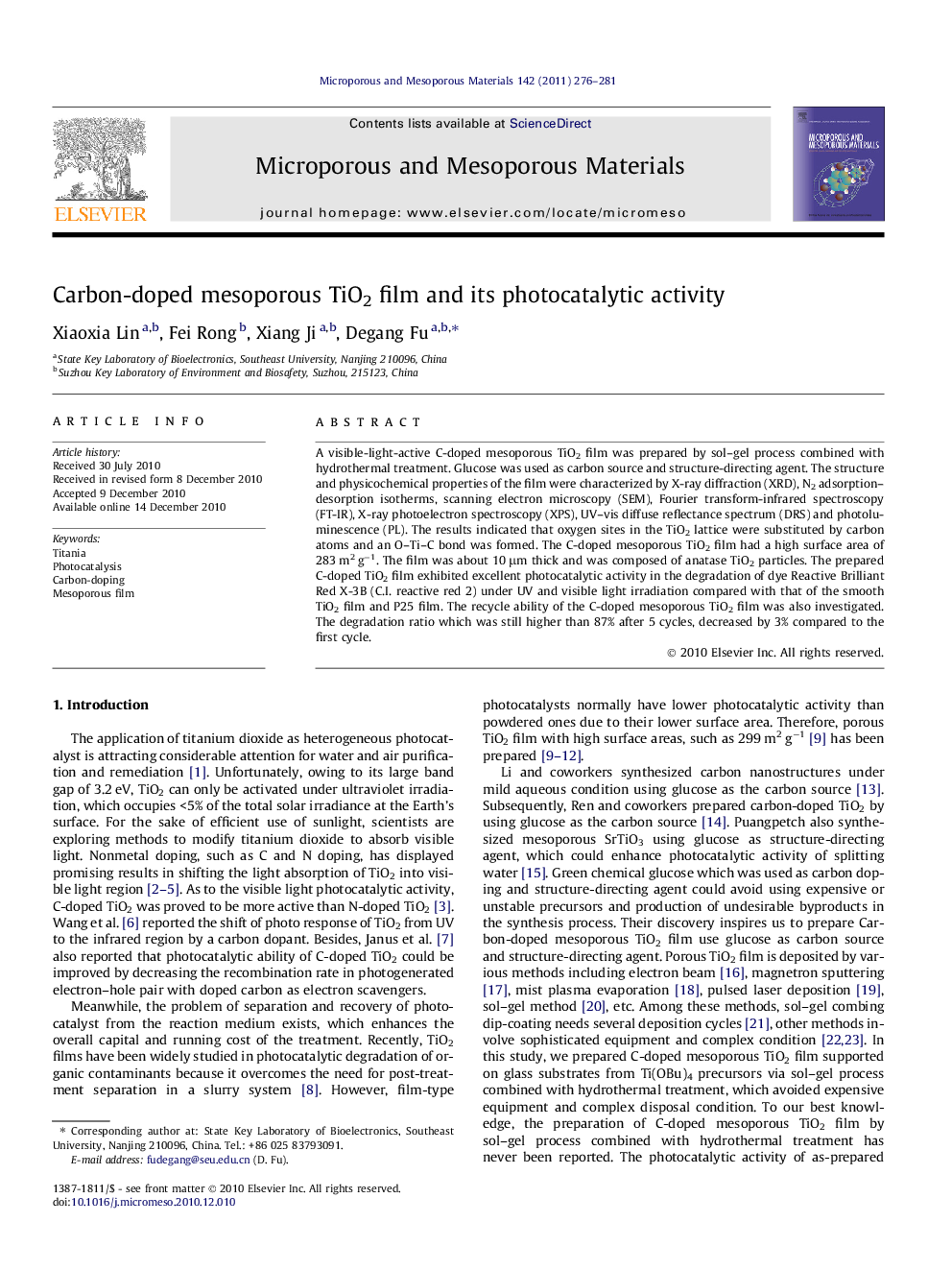| Article ID | Journal | Published Year | Pages | File Type |
|---|---|---|---|---|
| 74646 | Microporous and Mesoporous Materials | 2011 | 6 Pages |
A visible-light-active C-doped mesoporous TiO2 film was prepared by sol–gel process combined with hydrothermal treatment. Glucose was used as carbon source and structure-directing agent. The structure and physicochemical properties of the film were characterized by X-ray diffraction (XRD), N2 adsorption–desorption isotherms, scanning electron microscopy (SEM), Fourier transform-infrared spectroscopy (FT-IR), X-ray photoelectron spectroscopy (XPS), UV–vis diffuse reflectance spectrum (DRS) and photoluminescence (PL). The results indicated that oxygen sites in the TiO2 lattice were substituted by carbon atoms and an O–Ti–C bond was formed. The C-doped mesoporous TiO2 film had a high surface area of 283 m2 g−1. The film was about 10 μm thick and was composed of anatase TiO2 particles. The prepared C-doped TiO2 film exhibited excellent photocatalytic activity in the degradation of dye Reactive Brilliant Red X-3B (C.I. reactive red 2) under UV and visible light irradiation compared with that of the smooth TiO2 film and P25 film. The recycle ability of the C-doped mesoporous TiO2 film was also investigated. The degradation ratio which was still higher than 87% after 5 cycles, decreased by 3% compared to the first cycle.
Graphical abstractTiO2 + Glucose →Sol-gelcombinedwithhydrothermalprocess Carbon-doped TiO2 filmFigure optionsDownload full-size imageDownload as PowerPoint slideResearch highlights► Sol–gel method combined with hydrothermal treatment. ► C-doped mesoporous TiO2 film. ► Degradation X-3B under both UV and visible light. ► Photocatalytic activity enhanced more than 2.4 times and 3.6 times respectively. ► Circular use: The degradation ratio decreased only 3% compared to the first cycle after 5 cycles.
